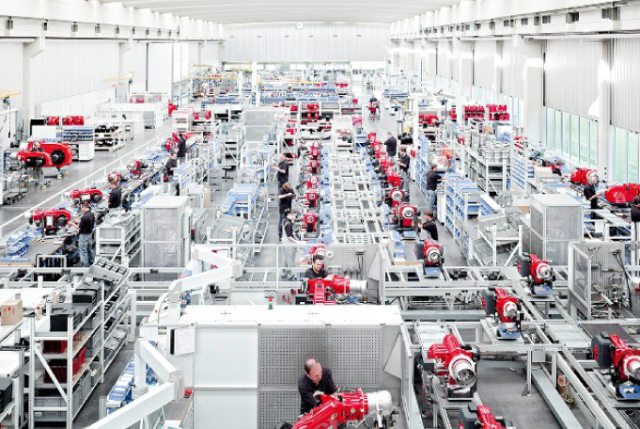
Steam Boilers – a Hospital’s Main Vein
In a hospital, the steam plant is a critical part of the infrastructure. The boilers provide steam for operations including building heat, domestic hot water, steam tables for kitchen use, humidification for surgical wards, laundry equipment, and for sterilizing both surgical equipment and medical refuse.
In 2012, Mercy Hospital’s central boiler plant had been limping along with outdated burners. Due to their age, parts were no longer available. After many visits from a local contractor to keep things running, it became clear it was time to replace the boilers.
New Technology Creates New Efficiencies
Burner technology has improved greatly over the last 25 years. In the past, burners relied on a single motor to drive linkages that attached to louvers on the air inlet and the shafts of the fuel valves. Burner setup was based on getting the best combustion for oil which dictated where the air louvers would be in relation to the gas valve. In older models, linkages wore and parts loosened. This wear and tear meant obtaining good combustion efficiency was very difficult.
The best combustion uses all of the fuel and oxygen. For safety, however, excess air is delivered by a constant speed fan. This excess air compensates for fluctuating amounts of oxygen as combustion air temperature changes.
To allow burner controls to set reliable, repeatable fuel/air mixtures over the entire combustion range, new burners incorporate linkageless controls with individual motors for each fuel-type and air dampers. New burners also make lower excess air possible by mixing fuel and air more efficiently. Measuring the oxygen amount in the flue and adjusting the combustion air damper controls the amount of excess air to a safe, low amount. It was paramount for Mercy to have a burner that maximized efficiency in this way.
Timeless Quality – Weishaupt Burners Provide Lifetime Savings
When it came time to decide on a new boiler system, Mercy had a choice between two options. The first was a burner from the installed manufacturer and the other for a Weishaupt burner, the largest burner manufacturer in the world.
Weishaupt developed the linkageless burner concept and was the first company to establish high turndown. These burners are the only ones with low excess air of 3% or less oxygen in the flue gas over the firing range. While both burners were proposed as linkageless, and had oxygen trim, the energy savings over the lifetime of the Weishaupt burner, along with the precision in its control, made for a more favorable investment. Mercy chose this solution and has witnessed efficiencies and little maintenance for the past six years. In fact, when an expansion was planned at the hospital, they asked to have Weishaupt burners installed and have had continued success in their operation.

